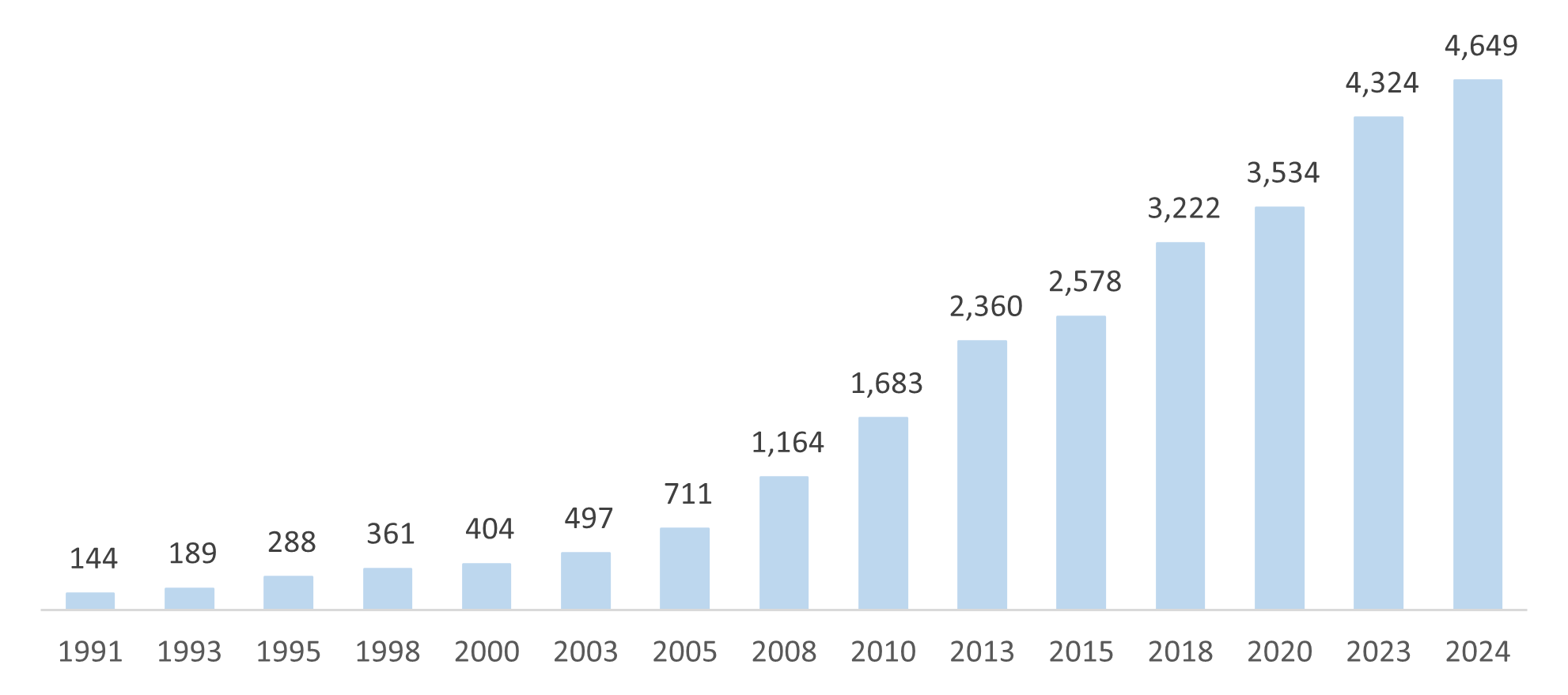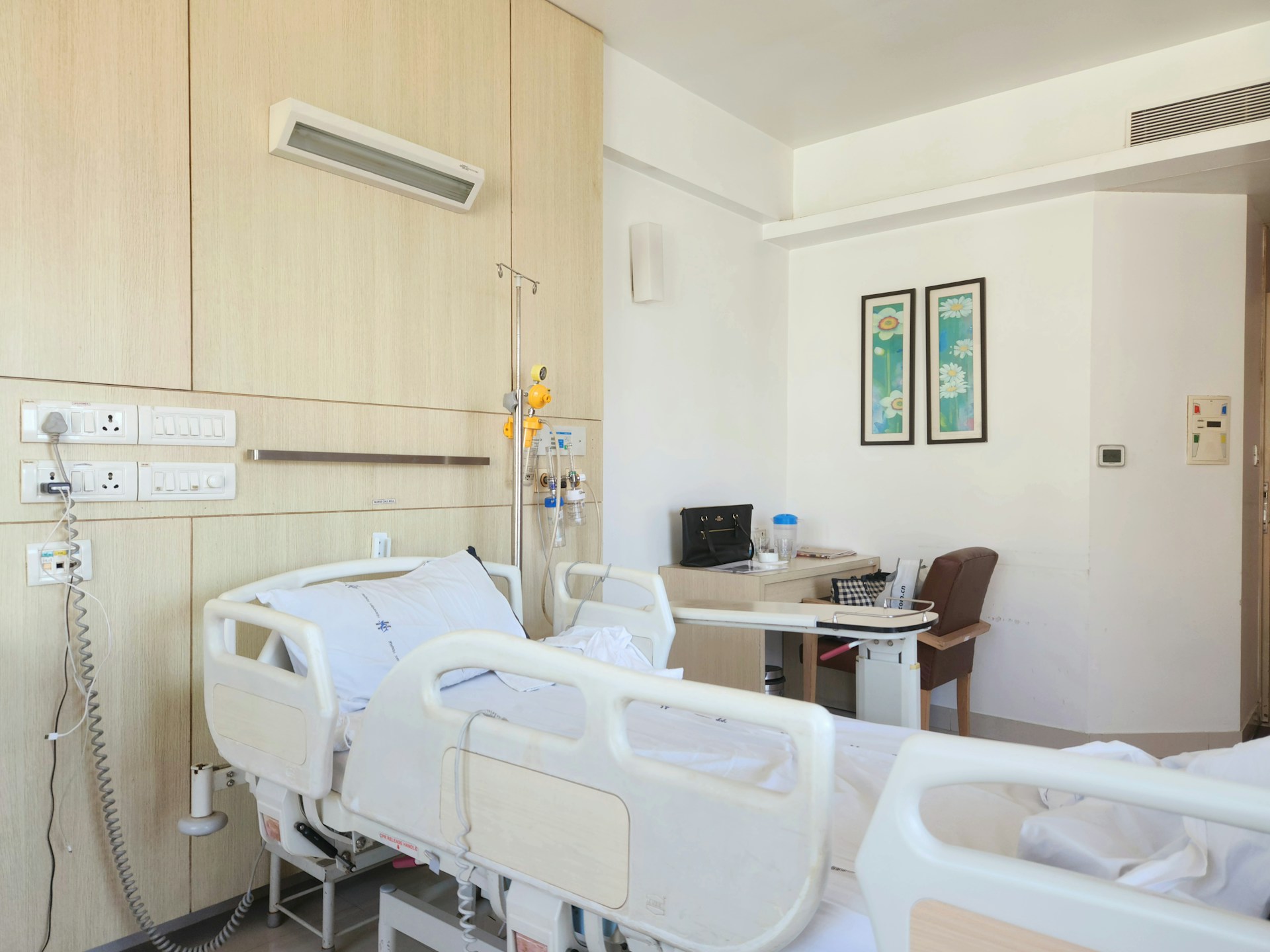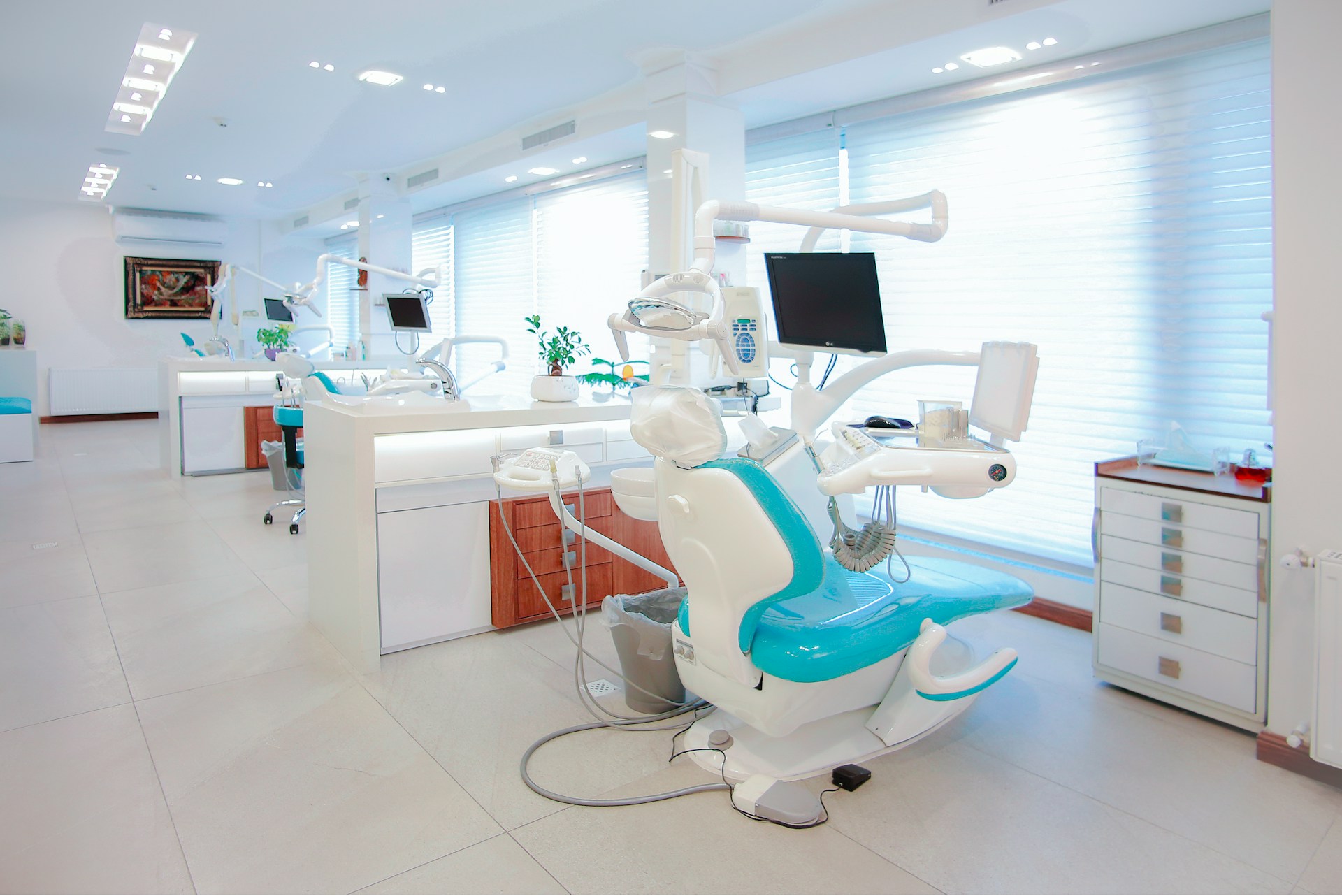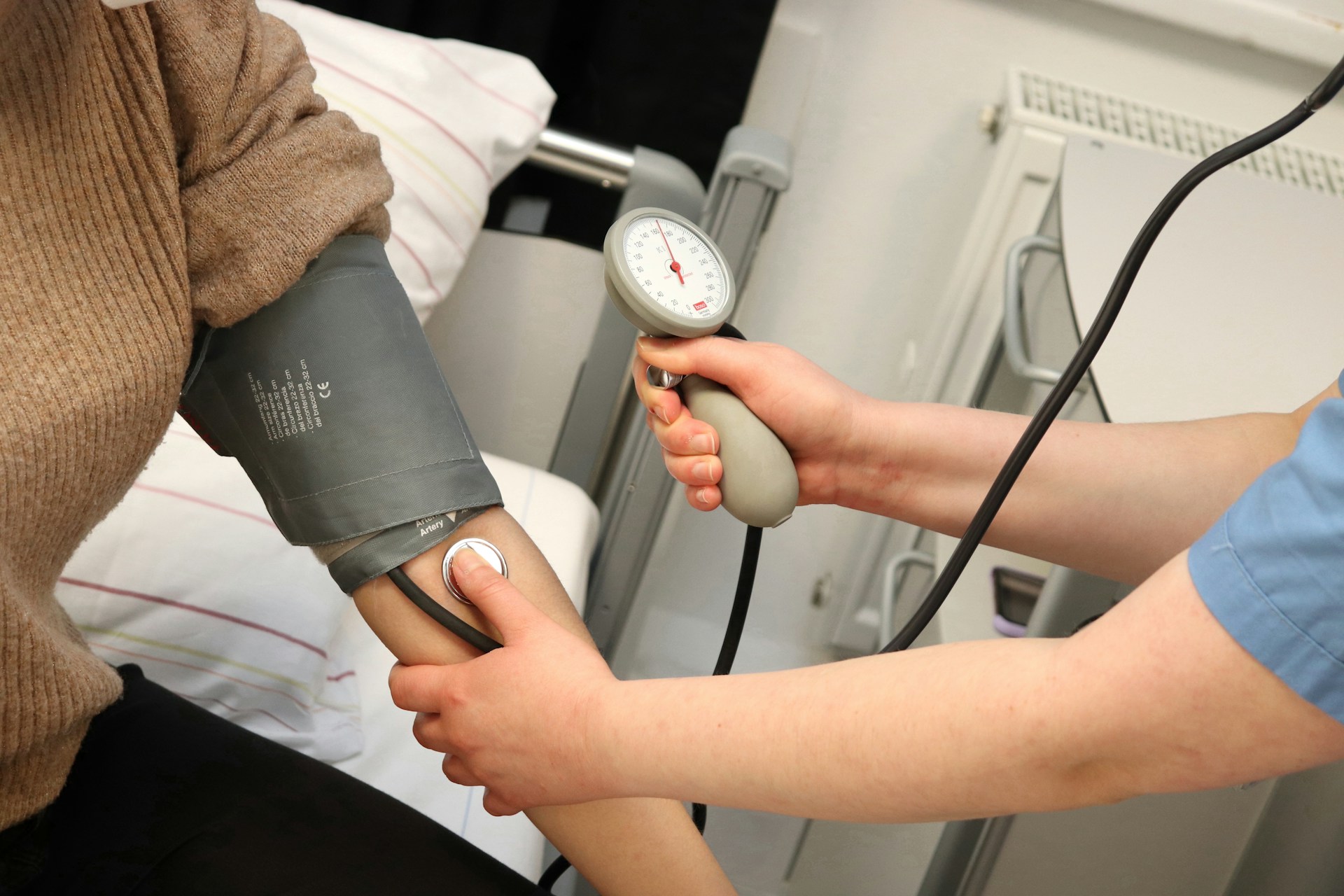
28Oct2025
Latest News & Report / Vietnam Briefing
Comments: No Comments.
Vietnam is at a pivotal stage in modernizing its healthcare sector, a process that requires significant investment in core digital infrastructure. The robust development of a secure and standardized healthcare data infrastructure is not only a technical objective but also a strategic prerequisite for attracting and retaining long-term capital, while ensuring the achievement of national social development goals.
Digital transformation in the healthcare sector
Source: giasang.thainguyen.gov.vn
Socio-economic context
Vietnam has made significant progress, transforming from one of the world’s poorest countries into a lower middle-income nation, with Average GDP per capita in 2024 achieved about 4,717 USD, ranked 120th in the world, jumping 65 places compared to 1991.[1] The continuous economic development of Vietnam, along with the ever-expanding middle class, has generated an increasing demand for high-quality and advanced healthcare services.[2] This demand is driving healthcare facilities to invest in upgrading infrastructure, improving operational efficiency, and equipping themselves with modern medical devices, in which digital transformation of the database is the key objective, ensuring the development of a safe and streamlined healthcare data infrastructure.
Vietnam GDP per capita during the period 1991-2024
(Unit: USD per capita)
Source: B&Company’s compilation from IMF’s data
The overall objective of digital transformation (CDT) in healthcare is to enhance management capacity, professional efficiency, and facilitate timely and effective access to healthcare services for both citizens and businesses. Strategically, digital transformation in healthcare is essential to achieve the goals towards Universal Health Coverage (UHC) and the Sustainable Development Goals (SDGs) by 2030. The Ministry of Health has concretized this policy through Resolution No. 157-NQ/BCSĐ and Decision No. 5316/QĐ-BYT on healthcare digital transformation to 2025, with orientation towards 2030.[3]
The strategic role of secure data infrastructure
As the Government links digital transformation of health directly to the achievement of high-level social and political goals such as Universal Health Coverage and the 2030 Sustainable Development Goals, any data-related incidents – such as insecurity, poor security, or fragmentation – threaten the ability to manage, measure, and verify these goals. Therefore, implementing resilient and secure data systems is seen as a way to support the Government in achieving its national commitments. This synchronization brings long-term stability to the health sector, thereby minimizing political and legal risks for long-term investors.
In addition, a secure, interoperable data system also helps optimize social insurance funds and ensure the transition to a sustainable health insurance model when high-quality, standardized, and reliable data are effectively managed and analyzed.
Legal framework and security: Ensuring data safety and trust
One of the most important foundations for attracting long-term investment in Vietnam’s HealthTech sector is legal certainty and the ability to protect sensitive medical data. This is the decisive factor for the legality and sustainability of any data exploitation project.
The promulgation of Decree 13/2023/NĐ-CP (Decree 13) on personal data protection in April 2023 marks a legal milestone, creating a comprehensive legal framework that impacts all businesses collecting and processing data in Vietnam.
Decree 13 introduces and defines for the first time the concept of sensitive personal data (health status and privacy such as genetic traits, sexual life, political views, etc…. recorded in medical records). The processing of sensitive personal data is subject to more stringent protection regulations than basic Personal Data. Vietnamese law prohibits the collection, transfer, purchase, and sale of personal data in any form without the consent of the data subject.[4]
Vietnamese Health Data Protection Framework: Key Requirements
| Data Type | Definition/Classification | Specific Example (Healthcare) | Implications for Data Processing |
| Basic Personal Data (Basic PII) | Personally identifiable information, but not highly private. | Full name, ID card number, Health insurance card number, Contact address | Apply protective measures and general consent. |
| Sensitive Personal Data (Sensitive PII) | Information associated with privacy, when violated, has a direct impact. | Health status, Medical records, Genetic characteristics | Request to enhance security, clear consent protocols, immediate incident notification, and continuous protection. |
Source: B&Company ‘s compilation from Decree 13/2023/ND-CP about the protection of personal data
With the passage of Decree 13/2023/ND-CP, data security is no longer just a technical optimization but has become a significant legal risk and an absolute barrier for investors. This creates a sustainable demand for certified security infrastructure solutions, such as Secure Cloud hosting services, data breach prevention (DLP), and compliance assessment services.
National infrastructure initiatives (EHR and VNeID)
Vietnam is promoting the development of Electronic Health Records (EHR) to manage citizens’ lifelong health information. EHR includes key functions such as data storage, diagnostic support, prescription management, and information sharing for research purposes.[5]
Since 2018, some localities such as Thua Thien Hue have implemented pilot programs, and currently major cities like Hanoi are expanding the application of the Electronic Health Record, replacing paper records and supporting remote medical examination and treatment.[6]
The current focus is on integrating EHR data with the national identification system VNeID – Vietnam Electronic Identification. The Ministry of Health is connecting medical data with the insurance and population databases, allowing citizens to use VNeID or chip-based identification (ID) cards for medical examinations and health insurance referrals without paperwork (from 7/2024).[7]
Standardizing data according to Fast Healthcare Interoperability Resources (FHIR) is an important milestone, enabling medical data to become an asset serving Artificial Intelligence (AI), Big Data, and research. Investing in FHIR infrastructure (Application Programming Interface – API, data conversion, compliance tools) will deliver long-term value.
Finally, the integration of EHR–VNeID demonstrates the trend towards centralizing access to national medical data. Private applications wishing to connect must comply with the API standards of the Ministry of Health/VNeID as outlined in Decree No. 69/2024/ND-CP on electronic identification and authentication; this is a vital factor for maintaining market participation capability.
Investment opportunities in safe infrastructure
The Vietnamese HealthTech market is considered a “gold mine,” with the main drivers being the need to modernize infrastructure and improve operational efficiency. Investing in compliance technology creates a strategic barrier. Decree 13 turns cybersecurity into an indispensable legal requirement. This means that only providers who can demonstrate superior compliance capabilities will be able to operate successfully in the sensitive medical data market. Capital invested in developing compliance-first platforms will generate a sustainable competitive advantage, as competitors using outdated or less secure approaches will face higher audit costs, fines, and the risk of being excluded from the market. This reinforces the long-term ROI of investments in secure infrastructure.
In addition, the strong national focus on integrating EHR and VNeID creates large-scale and predictable public procurement cycles. Nationwide implementation requires standardized infrastructure components and large-scale integrated services. This is not a case of distributed procurement but rather a centrally coordinated capital deployment. Therefore, investors should focus on strategic Public-Private Partnerships (PPP) or direct government tenders, providing a critical data backbone (FHIR integration, security components) that the Ministry of Health and related agencies need to meet mandatory deadlines. This predictability helps mitigate the usual market risks associated with venture capital.
Prioritized Investment Clusters in Secure Health Data Infrastructure (2025-2030)
| Investment sector | Theoretical Basis (Based on the Vietnamese Context) | Related Technology/Trends | Long-term Expected ROI Drivers |
| Data Interaction Solution | A significant gap in EHR integration, with an absolute requirement for a scalable data exchange platform.[8] | FHIR server, API Management, National Integration Platform, Data Standardization Service. | Exploiting the value of secondary data (research, analysis, AI) and national scalability. |
| Cybersecurity & Compliance | High risk of data leakage; strict regulations under Decree 13 for sensitive personal data.[9] | Encryption protocol, Privacy-Enhancing Technologies (PETs), Security Audit Services, DLP solutions. | Maintain market confidence, avoid legal penalties, and create competitive differentiation. |
| Certified Medical Cloud Infrastructure | The demand for flexible infrastructure, cost efficiency, and scalability beyond legacy systems.[10] | IaaS/PaaS certified focusing on medical data sovereignty, Managed Services for compliance. | Operational efficiency, rapid service expansion, and ensuring compliance with Decree 13. |
Source: B&Company’s synthesis
Conclusion
The development of a secure medical data infrastructure is a strategic investment, not only ensures legal compliance but also establishes a sustainable technical and financial foundation for the digital healthcare ecosystem. The investors and HealthTech enterprises need to prioritize compliance with Decree 13/2023/ND-CP, consider security and auditing as profit-generating factors; invest in team knowledgeable in FHIR standards to effectively participate in the national data system (VNeID/EHR); towards secure, flexible SaaS (Software as a Service) model, reduce infrastructure costs; and focus on exploitation secondary data value serving AI, research and health policy. At the policy level, it is necessary mandatory application of unified FHIR standard, strengthen coordination between the Ministry of Health – Social Insurance – Ministry of Public Security, encourage investment in certified cloud infrastructure and promote technical – clinical human resources training to ensure the long-term development of Vietnam’s digital healthcare.
* If you wish to quote any information from this article, please kindly cite the source along with the link to the original article to respect copyright.
| B&Company
The first Japanese company specializing in market research in Vietnam since 2008. We provide a wide range of services including industry reports, industry interviews, consumer surveys, business matching. Additionally, we have recently developed a database of over 900,000 companies in Vietnam, which can be used to search for partners and analyze the market. Please do not hesitate to contact us if you have any queries. info@b-company.jp + (84) 28 3910 3913 |
[1] Cafef.vn, Vietnam’s GDP per capita used to rank 185/188 in the world. How has it jumped now? (https://cafef.vn/gdp-binh-quan-viet-nam-tung-dung-thu-185-188-the-gioi-hien-nhay-vot-the-nao-188250419012519003.chn)
[2] Trade.gov, Vietnam healthcare (https://www.trade.gov/country-commercial-guides/vietnam-healthcare)
[3] Ministry of Health, Healthcare Partnership Group Meeting: Digital Transformation in Healthcare in Vietnam by 2030 (https://moh.gov.vn/tin-noi-bat/-/asset_publisher/3Yst7YhbkA5j/content/cuoc-hop-nhom-oi-tac-y-te-chuyen-oi-so-trong-y-te-tai-viet-nam-en-nam-2030)
[4] Ybahcm.vn, The latest legal framework on personal data protection (https://ybahcm.vn/khung-phap-ly-moi-nhat-ve-bao-ve-du-lieu-ca-nhan/)
[5] Ocd.vn, What is an electronic health record (EHR)? All about HER (https://ocd.vn/ho-so-suc-khoe-dien-tu-ehr/)
[6] Ministry of Health, Hanoi: Benefits of each citizen having an electronic health record (https://moh.gov.vn/hoat-dong-cua-dia-phuong/-/asset_publisher/gHbla8vOQDuS/content/ha-noi-tien-ich-tu-viec-moi-nguoi-dan-co-mot-ho-so-suc-khoe-ien-tu)
[7] Ministry of Health, The Ministry of Health strives to deploy electronic health records, ensuring the progress of Project 06 (https://moh.gov.vn/tin-lien-quan/-/asset_publisher/vjYyM7O9aWnX/content/bo-y-te-no-luc-trien-khai-ho-so-suc-khoe-ien-tu-am-bao-tien-o-trien-khai-e-an-06?inheritRedirect=false)
[8] Ministry of Health, Challenges in digital transformation of the healthcare industry (https://moh.gov.vn/tin-lien-quan/-/asset_publisher/vjYyM7O9aWnX/content/nhung-thach-thuc-trong-chuyen-oi-so-nganh-y-te)
[9] Ybahcm.vn, The latest legal framework on personal data protection (https://ybahcm.vn/khung-phap-ly-moi-nhat-ve-bao-ve-du-lieu-ca-nhan/)
[10] Vngcload.vn, 10 Key Benefits of Cloud Computing in Healthcare (https://vngcloud.vn/vi/blog/10-key-benefits-of-cloud-computing-in-healthcare)








































